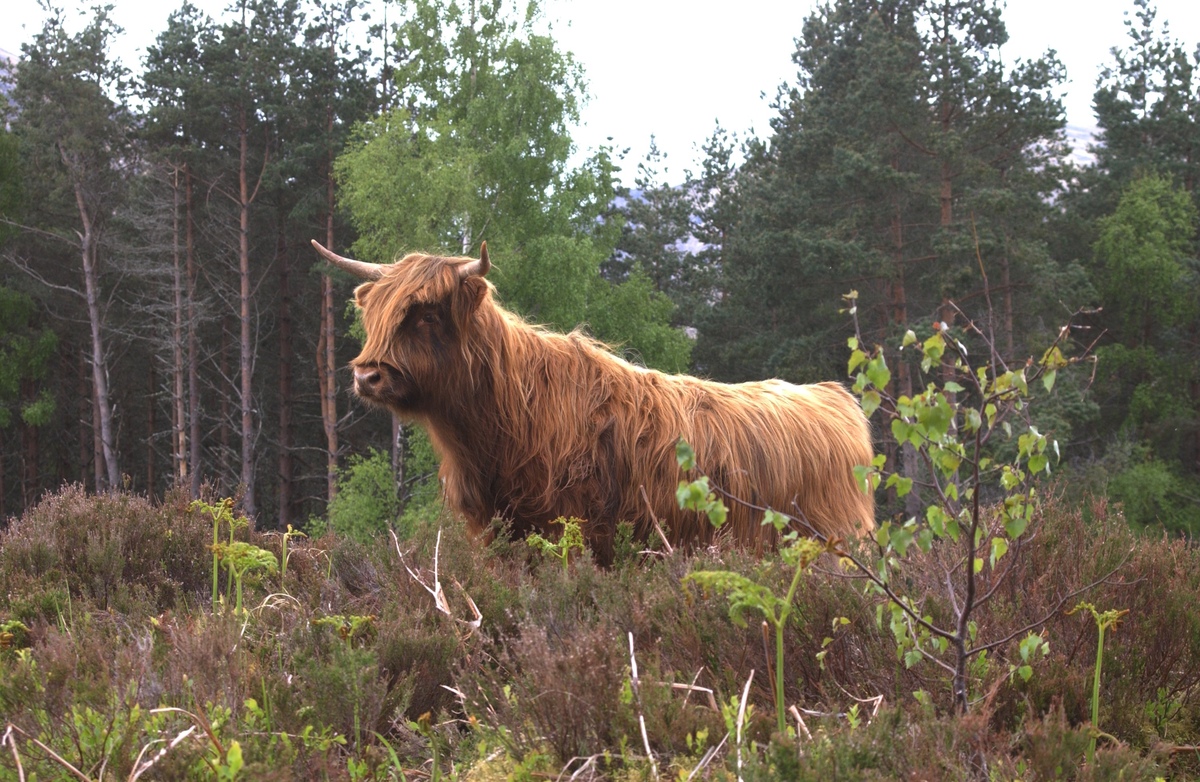Cows: Unlikely gardeners!

Home to the remains of the Antonine Wall, once the northernmost tip of the Roman Empire, Nethercroy Hill is now a World Heritage Site. It's a beautiful spot—a stunning nature spot where butterflies, bats, great crested newts and other species make their homes in lush, wildflower-strewn meadows and ancient woodland. One group of residents arrived more recently, and you are almost sure to meet them if you visit between April and September.
Some visitors say they look forward to seeing the cattle, and that it brings the hillside alive when they return each spring."
As part of our conservation of the grasslands, we graze a small herd of rare breed cows on the open hill between April and September of each year, in partnership with Historic Environment Scotland and North Lanarkshire Council. The herd help to preserve this unusual habitat in an environmentally low-impact way. Nethercroy was used for grazing in the past, so their return to these fields brings nature full circle.
Meadows are magnificent
With more and more information from ecologists about the importance of meadows, grasslands and moorland, a new appreciation of the rarity of the habitats at Nethercroy dawned. Lowland rush pasture, meadow and dry acid grassland are all much healthier when tended by our resident cows - nature’s gardeners. Their presence, and the maintenance of these habitats they support, offers ecological niches for rare wildlife.
"Forestry and Land Scotland have been working with a local livestock manager to graze the site for the past 6 years” explains Yvonne, a Planning Manager for the area. “The livestock manager visits daily to look after the cattle and the site. Some visitors say they look forward to seeing the cattle, and that it brings the hillside alive when they return each spring. We can report that the ongoing maintenance of the delicate habitats, great crested newt population, and the Antonine Wall itself are all doing well at the site under the cows’ stewardship!”
Caretakers of the land
Cattle only lightly graze the land, which makes them the perfect caretakers for lowland meadow environments. Their presence stops the open land becoming scrub or woodland. The cattle also help protect the turf above the Antonine Wall without the use of chemicals or heavy machinery, which means the underlying archaeology can be preserved for generations to come.
Nethercroy hill is still a popular destination for dog walkers and nature-lovers, so we thought carefully about the best breed of cow to bring to the site. We chose Highland and Whitebred cattle crosses, both heritage breeds which are smaller in size, and known for being more docile than standard cattle.
Visitors should normally report friendly encounters with the herd, who are inquisitive, and easy going. If you’re paying a visit to the area and come across them, don’t approach directly (especially if walking a dog), as you don’t want to spook them. We would advise to leave them be, but don’t be alarmed if they come to you - their natural curiosity will no doubt bring them near to some visitors. If you’re lucky, you might even bag a selfie with one of these placid, friendly gardeners.